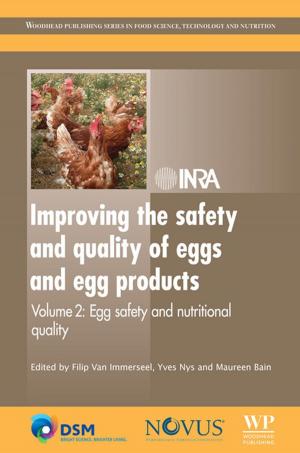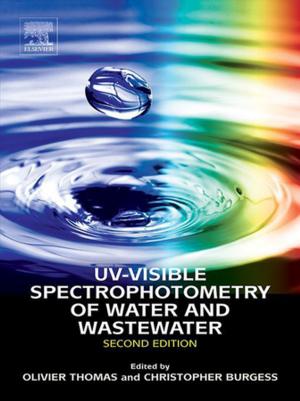Tamime and Robinson's Yoghurt
Science and Technology
Nonfiction, Science & Nature, Technology, Food Industry & Science| Author: | A. Y. Tamime, R K Robinson | ISBN: | 9781845692612 |
| Publisher: | Elsevier Science | Publication: | March 22, 2007 |
| Imprint: | Woodhead Publishing | Language: | English |
| Author: | A. Y. Tamime, R K Robinson |
| ISBN: | 9781845692612 |
| Publisher: | Elsevier Science |
| Publication: | March 22, 2007 |
| Imprint: | Woodhead Publishing |
| Language: | English |
Previous editions of Yoghurt: Science and Technology established the text as an essential reference underpinning the production of yoghurt of consistently high quality. The book has been completely revised and updated to produce this third edition, which combines coverage of recent developments in scientific understanding with information about established methods of best practice to achieve a comprehensive treatment of the subject. General acceptance of a more liberal definition by the dairy industry of the term yoghurt has also warranted coverage in the new edition of a larger variety of gelled or viscous fermented milk products, containing a wider range of cultures.
Developments in the scientific aspects of yoghurt covered in this new edition include polysaccharide production by starter culture bacteria and its effects on gel structure, acid gel formation and advances in the analysis of yoghurt in terms of its chemistry, rheology and microbiology. Significant advances in technology are also outlined, for example automation and mechanisation. There has also been progress in understanding the nutritional profile of yoghurt and details of clinical trials involving yoghurts are described.
This book is a unique and essential reference to students, researchers and manufacturers in the dairy industry.
- Includes developments in the understanding of the biochemical changes involved in yoghurt production
- Outlines significant technological advances in mechanisation and automation
- Discusses the nutritional value of yoghurt
Previous editions of Yoghurt: Science and Technology established the text as an essential reference underpinning the production of yoghurt of consistently high quality. The book has been completely revised and updated to produce this third edition, which combines coverage of recent developments in scientific understanding with information about established methods of best practice to achieve a comprehensive treatment of the subject. General acceptance of a more liberal definition by the dairy industry of the term yoghurt has also warranted coverage in the new edition of a larger variety of gelled or viscous fermented milk products, containing a wider range of cultures.
Developments in the scientific aspects of yoghurt covered in this new edition include polysaccharide production by starter culture bacteria and its effects on gel structure, acid gel formation and advances in the analysis of yoghurt in terms of its chemistry, rheology and microbiology. Significant advances in technology are also outlined, for example automation and mechanisation. There has also been progress in understanding the nutritional profile of yoghurt and details of clinical trials involving yoghurts are described.
This book is a unique and essential reference to students, researchers and manufacturers in the dairy industry.
- Includes developments in the understanding of the biochemical changes involved in yoghurt production
- Outlines significant technological advances in mechanisation and automation
- Discusses the nutritional value of yoghurt















